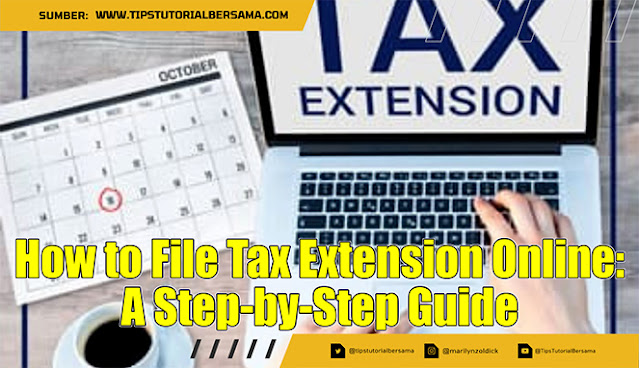Filing your taxes can be a daunting task, especially if you're struggling to gather all the necessary information in time. If you find yourself running out of time and unable to meet the tax deadline, you can file for a tax extension. A tax extension can give you more time to file your tax returns without incurring any penalties. The process of filing a tax extension has become much more straightforward in recent years, thanks to the internet. In this article, we'll guide you through the steps you need to take to file a tax extension online.
Understanding Tax Extensions
Before we dive into the process of filing for a tax extension online, it's important to understand what a tax extension is and what it can do for you. A tax extension is a way for taxpayers to request additional time to file their tax returns. By filing for an extension, you can get an additional six months to file your tax returns without incurring any penalties. It's important to note that while a tax extension gives you more time to file your tax returns, it does not give you more time to pay your taxes. You'll still need to estimate your tax liability and pay what you owe by the tax deadline to avoid interest and penalties.
Eligibility for a Tax Extension
Not everyone is eligible for a tax extension. To qualify for a tax extension, you must meet certain criteria. First, you must file your extension request by the tax deadline. Second, you must estimate your tax liability and pay what you owe by the tax deadline to avoid penalties. Third, you must be able to show reasonable cause for requesting an extension. Examples of reasonable cause include a natural disaster or a personal emergency that prevented you from filing your taxes on time. If you don't have a reasonable cause, you may still be able to file for an extension, but you'll be subject to penalties.
How to File Tax Extension Online
Now that you understand what a tax extension is and who is eligible for one, let's dive into the process of filing for a tax extension online. Here are the steps you need to take:
Step 1: Gather Your Information
Before you start the process of filing for a tax extension online, make sure you have all the necessary information. This includes your Social Security number, tax year for which you're requesting an extension, and your estimated tax liability.
| Read Also : How to File Tax Extension: A Step-by-Step Guide |
Step 2: Choose an Online Filing Option
There are several online filing options available for filing a tax extension. You can use tax software, a tax professional, or the IRS Free File program. Each option has its pros and cons, so choose the one that best fits your needs.
Step 3: Fill Out the Extension Form
Once you've chosen your online filing option, you'll need to fill out the extension form. The form you'll need to fill out depends on your tax situation. For example, if you're an individual taxpayer, you'll need to fill out Form 4868. If you're a business owner, you'll need to fill out Form 7004.
Step 4: Submit Your Extension Request
After you've filled out the extension form, you'll need to submit your extension request. If you're using tax software or a tax professional, they'll submit the request on your behalf. If you're using the IRS Free File program, you can submit the request directly to the IRS through their website. Make sure to double-check all the information you've provided before submitting your request.
Step 5: Pay Your Estimated Tax Liability
Remember that filing for a tax extension does not give you more time to pay your taxes. You'll need to estimate your tax liability and pay what you owe by the tax deadline to avoid penalties. If you're not sure how much you owe, use the IRS's online payment tool to help you calculate your estimated tax liability.
Step 6: Wait for Approval
Once you've submitted your extension request and paid your estimated tax liability, you'll need to wait for approval. The IRS will typically approve your request within a few days. If your request is denied, the IRS will provide you with a reason and instructions on how to fix the issue.
Step 7: File Your Tax Returns
Finally, once you've received approval for your extension request, you'll have an additional six months to file your tax returns. Make sure to file your tax returns by the new deadline to avoid any penalties.
Conclusion
Filing for a tax extension online is a straightforward process that can
give you more time to file your tax returns without incurring any penalties.
However, it's important to remember that filing for an extension does not
give you more time to pay your taxes. You'll still need to estimate your tax
liability and pay what you owe by the tax deadline to avoid interest and
penalties. By following the steps outlined in this article, you can file for
a tax extension with ease and ensure that you meet the deadline.










